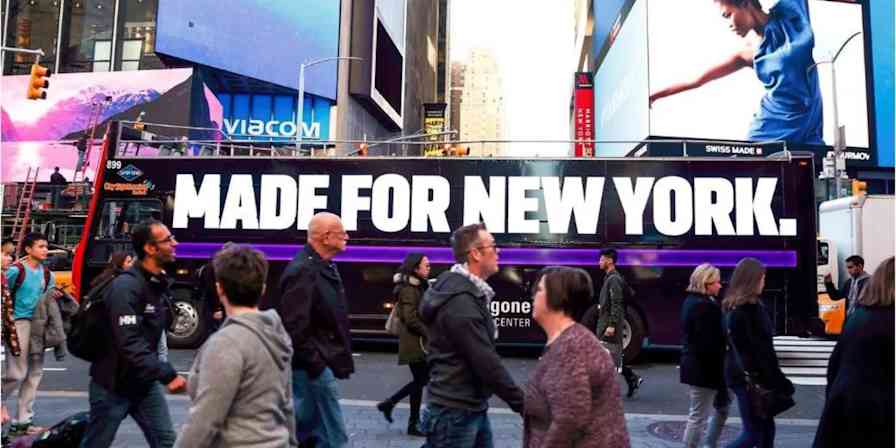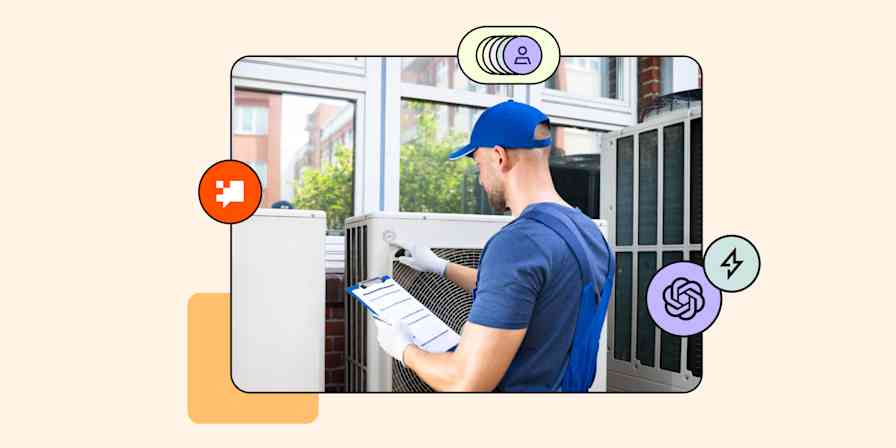It took less than a year for rideshare advertising startup Halo Cars to go from start to acquisition—and founder Kenan Saleh says without automation and Zapier that would have been hard to do.
Kenan started Halo Cars with co-founders Faizan Bhatty and Ryanne Fadel during his senior year of college. Rideshare drivers could earn extra money by installing the Halo Cars hardware and displaying ads on and in their cars. The team tested things while school was in session, and it did very well. They took the company full-time, raised a round of funding, and were growing very quickly.

Halo Cars was founded in 2018 and acquired by Lyft about 10 months later. The company is now part of Lyft, called Lyft Media. Kenan is general manager and head of that division.
Their earliest growth was fueled by a high-touch onboarding process. They focused on drivers who worked in the most desirable areas. Interested drivers could apply on the website—then the hands-on work started.
"It used to be a completely manual process," Kenan said. "It was someone on a spreadsheet who would call people, update the spreadsheet, send an email, receive the response, then organize it in Google Drive. This was all done by our driver onboarding team."
Our stories explore how people at businesses of all sizes use Zapier to solve common problems, get more done, and move forward faster. If you haven't yet, try Zapier for free to see what we're all about.
Halo Cars team members sent drivers instructions about how to qualify for the program. If accepted, they'd send out documentation, set up an installation appointment, and send out reminders to the driver and others at Halo.
"There were more than 10 manual interventions and probably 2-3 hours spent per driver," Kenan said.
Growth powered by automation
That's when they turned to Zapier, a platform that allowed them to easily create custom automated workflows to handle these manual tasks. After setting up a few Zaps—the word for a workflow created in Zapier—they'd dramatically reduced their hands-on time.
Zapier is workflow automation software that empowers anyone to create complete, customized, automated solutions. Combine user interfaces, data tables, and logic with 6,000+ apps to build and automate anything you can imagine. Check out this page to learn how Zapier works.
"By the end, there were 0-1 steps, where if something went wrong we jumped in and fixed it. It went from hours to minutes. We automated everything. It made the process so much more scalable," Kenan said.
When they started, the team could onboard about 10 drivers per day. After automating the process, it was hundreds. And the people who used to manage that process found themselves with time to work more creative and challenging tasks.
"People were excited," Kenan said. "We were not automating people's jobs. We were automating this really annoying process that everyone had to do and no one wanted to do. When they found out that was going to be automated, it was 'Thank goodness I don't have to do that anymore.' They were very happy."
And, after introducing Zapier to the team, Kenan said, people found other things to automate, too. The sales team set up workflows to automatically create calendar events and track sales in Airtable. They added automation to their equipment issue reporting and notification system.
Learn more about how Halo Cars uses Airtable.
'The glue' that ties their systems together
Even after the acquisition, their reliance on automation with Zapier didn't change.
"We still use all of them today," Kenan said. "We brought it with us. There's no way we could operate without it." Kenan and the team—now known as Lyft Media, a unit within rideshare giant Lyft—rely on Zapier to help them connect apps like Airtable, DocuSign, Twilio, Google Sheets, and Google Drive.
"The Airtable and Zapier combo is very important," he said. "We use Airtable as our CRM and our home base and Zapier as the glue that connects all of that together."
The team uses Zapier to send things into Airtable, but also has Zaps that watch for changes in Airtable that then kick off workflows in other apps.
"We're using Airtable as our CRM, so when something comes in, it goes into Airtable," he said. "Then, when there's a status change, that triggers another Zap. Everything will be recorded in Airtable and Zapier makes all these other things happen. That combo is really important to us."
Here are a few Airtable Zaps to start with:
Send Gmail messages for new Airtable records in views
Post notifications about new Airtable records in a view to Slack
Send Twilio SMS messages with new Airtable records in view
Beyond the Airtable Zaps, Kenan said the team uses Zapier to set up workflows that can accomplish more than one task from a single starting point. For example, from a single form submission, they can create a record in Airtable, send an email, post in chat, and text someone.
Automation for outsized impact
"It's hard to quantify" how much time and money Zapier has saved the team, Kenan said. "It's countless, countless hours of manual time. Like, hundreds, thousands, of hours over the lifetime of our business. Let's say it took an hour per task, and over the lifetime of our business, we've done tens of thousands of these tasks. We've saved at least 10s of thousands of manual time-intensive hours."
They never quantified automation from a budget standpoint, but Kenan said that when they started, they were paying about $100 a month for their Zapier account. If they'd decided to code things instead, it would have cost them tens—or hundreds—of thousands to hire or contract with someone to write the code.
"Zapier allowed us to do a lot more than we thought we could do with the size of our team," he said. "At the time of being acquired, we had about 10 full-time employees. Lyft was surprised with how small we were and what we were doing. They were shocked that we didn't have a big engineering team."
At every stage, when they talked with agencies, investors, everyone was impressed with how much they were able to do and how quickly they could grow and scale.
"I remember people saying how quickly we responded to email and handled tasks," Kenan said. "Zapier is part of why we were able to do that. We were able to act and function like a much bigger team and to do things very quickly."
What's your story? Tell us how you use Zapier to do more. You can also read even more customer stories and find new ways to improve your workflow and productivity.
Related reading:





